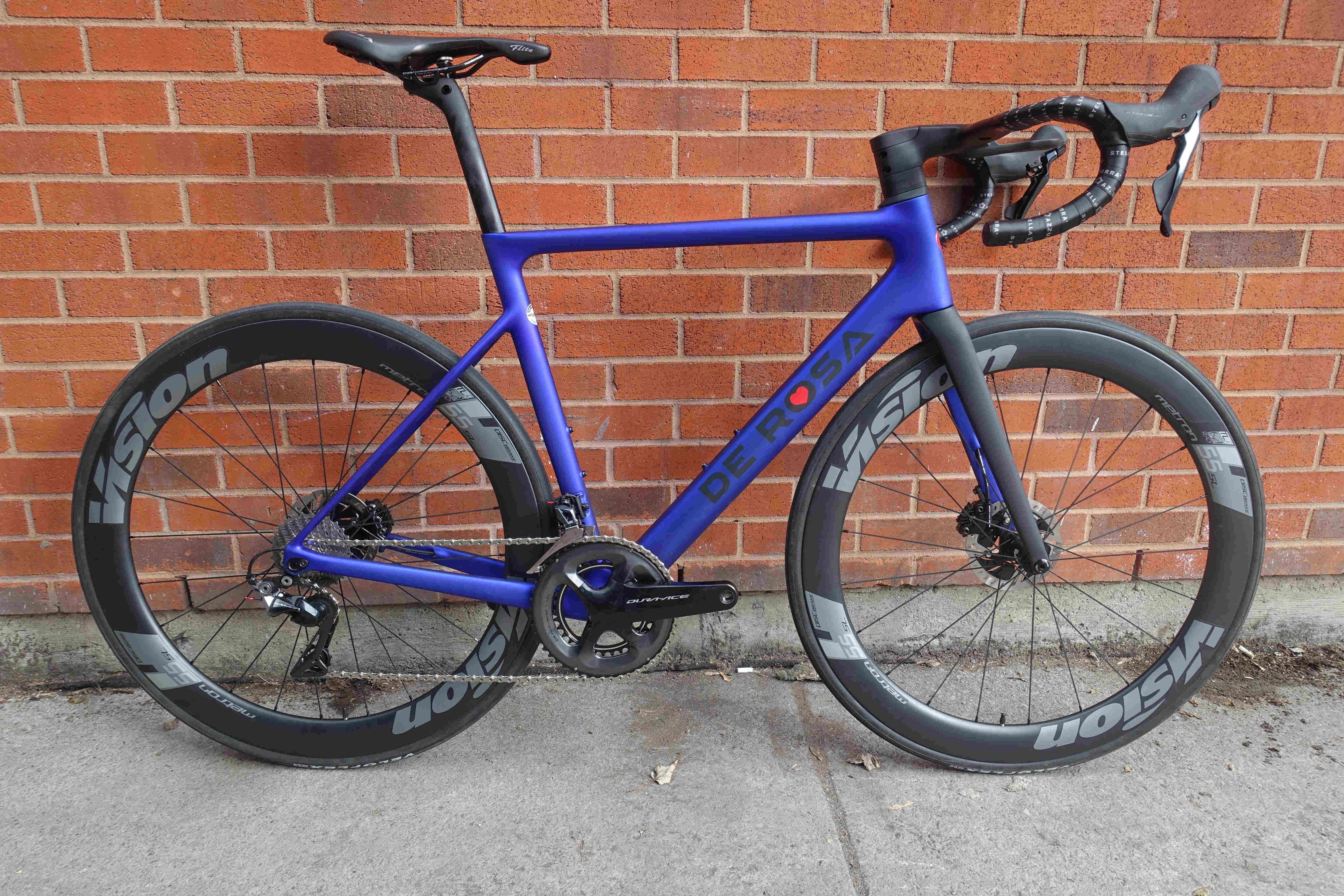Review: De Rosa Merak
A name from 20 years ago on a bike that’s very now

“Is that a De Rosa?” shouted John. He’s the father of my daughter’s classmate. He and I had only chatted a handful of times, but has he saw me walking with my kid and the bike, he couldn’t help but blast his question from his porch while he was in the middle of getting his children ready for school and daycare. Even at a distance, the De Rosa Merak is eye-catching.
What struck me about the Merak when I first took it in was how regular the tube shapes looked. The Idol I tested four years ago had what seemed like trim on its down tube. The SK Pininfarina I rode in 2017 had its noticeable fairing between the seat tube and the top of the seatstays. The Merak, however, looks like a modern, standard carbon-fibre bike. But of course, you can’t really call a De Rosa standard. Standard bikes don’t elicit shouts from front porches.
Similarities and developments
In the De Rosa lineup, there’s the Protos. With its tubes that suggest wind-cheating abilities, the Protos remains the company’s flagship racing frame. The King, De Rosa’s bike for climbers, seems to resemble the Merak the most, except at the rear triangle. The Merak has lower seatstays. “It has a compact geometry, which De Rosa hasn’t really done,” says Brian Quessy from Logica Sport, the Montreal-based company that brings De Rosa to Canada. “De Rosa usually goes low and long with the wheelbase. Now, they have this poppy bike with steeper angles.”
I could feel that pop on my rides. The Merak frame is stiff, providing speedy accelerations and zippy turns. It felt lively on my local hills, too. De Rosa says the frame, a size 54, weighs 800 g. I imagine that by steering away from novel tube shapes, the company was able to keep some weight off of the Merak. A complete bike with pedals and bottle cages weighs 7.54 kg.
The Shimano Dura-Ace mechanical group with hydraulic disc brakes is a good match for the frame. Both the shifting and the stopping are smooth, like the Merak. The Vision ACR Metron integrated bar and stem keeps all the cables hidden. The bar/stem setup can limit your fit options: there are only seven ACR Metron models that range from a 100-mm-long stem with a 40-cm-wide bar to 130-mm by 44-cm. Matched with the Vision Metron 55 SL Disc wheels, the bar/stem unit adds aerodynamic touches that don’t necessarily match the frame. The Merak is not an aero bike. Still, dressing the bike with parts that can slice through the air doesn’t hurt.
The 2020 Merak debuted is past summer. The name, however, calls back to a 20-year-old milestone. “For the De Rosa family, Merak evokes the year 2000 when it won the world championship in Plouay, France, with Romāns Vainšteins,” said Danilo De Rosa, the company’s managing partner. The champion from Latvia rode an aluminum frame. “The Merak is a key product for the De Rosa frame line and, for this reason, in a retro-futurism perspective, we decided to name Merak our next top-of-the-range product.”
The name may be retro, but every-thing else is quite modern. You can see that at a distance.
De Rosa Merak
Components
Shimano Dura-Ace mechanical, 11–28 tooth, 11-speed cassette, 50/34-tooth crankset, hydraulic disc brakes, 140-mm-diameter rotors (front/rear), Vision ACR Metron bar/stem
Wheels
Vision Metron 55 SL Disc
Sizes (cm)
43, 46, 48, 50, 52, 54, 56, 58
Price
$12,300




